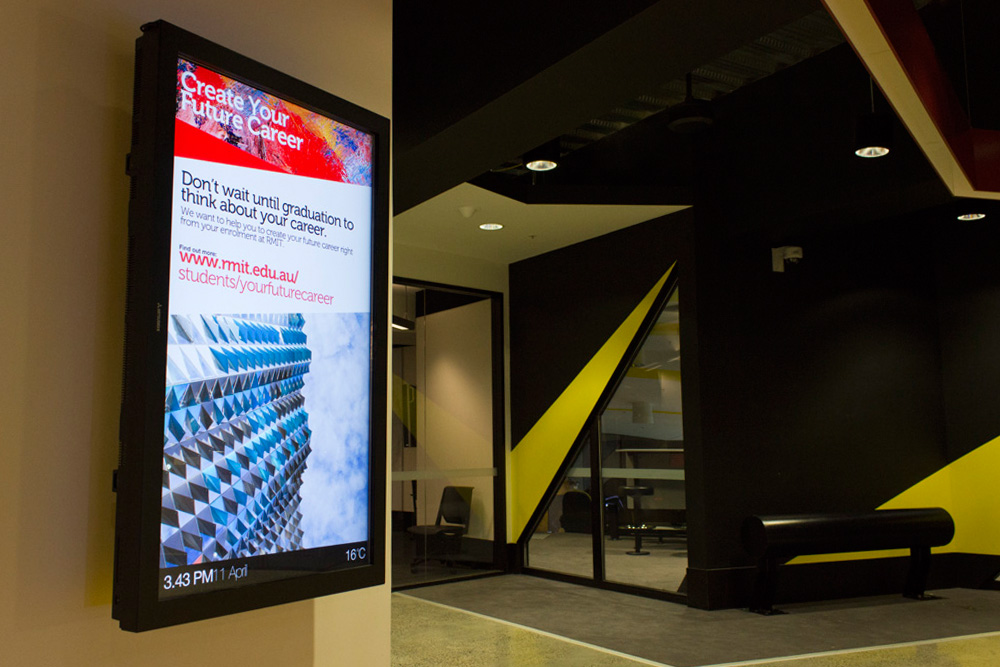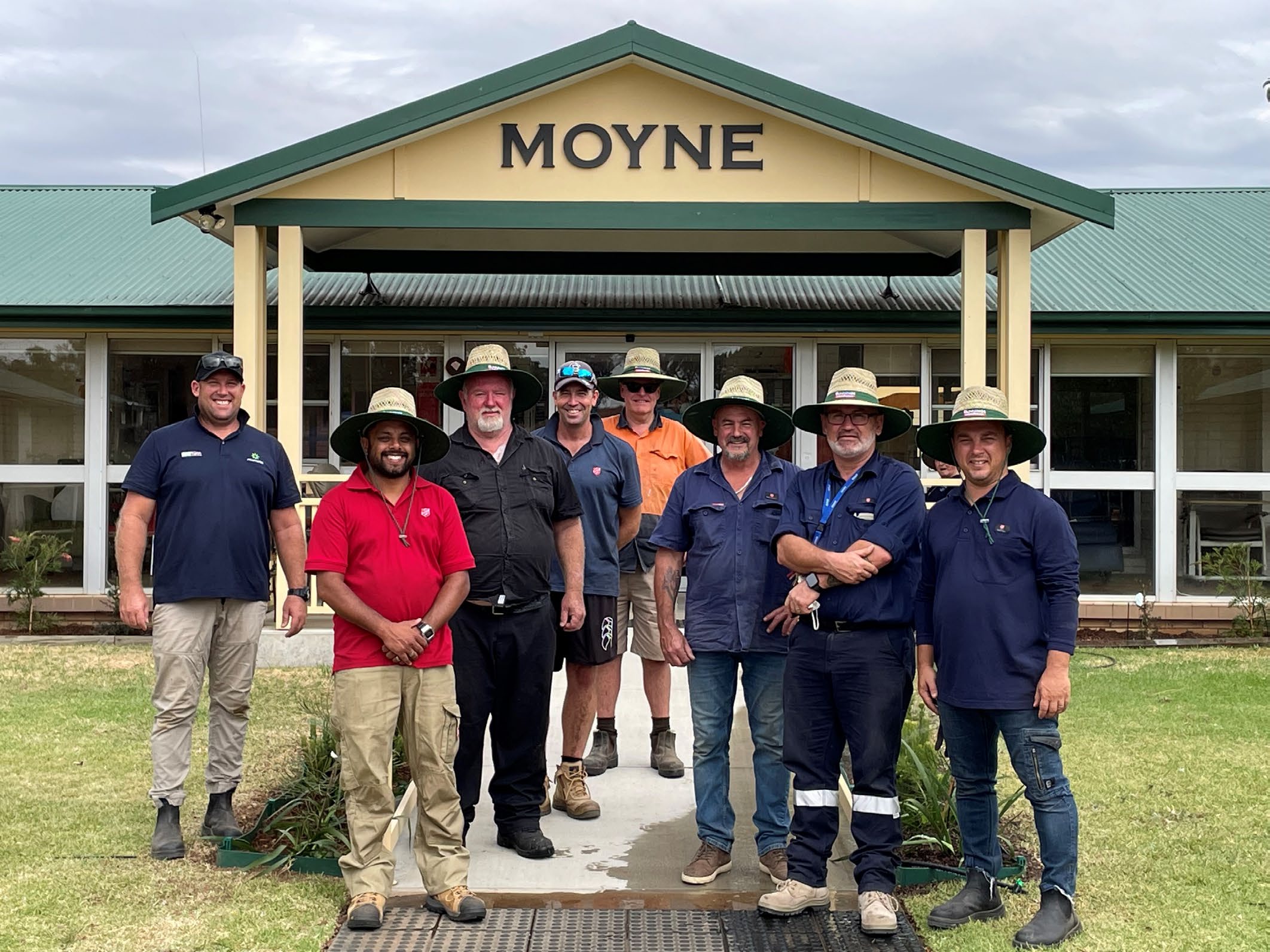More organisations are adopting digital wayfinding methods to inform and direct visitors around their large facilities. If you are thinking about following suit, there are a few things you need to first consider.
by Sam Warburton
Audio Visual Sales Manager, Programmed Electrical Technologies

Example of digital wayfinding at RMIT University Melbourne. Programmed Electrical Technologies installed 110 digital signage displays throughout RMIT Swanston Academic Building.
What is Digital Wayfinding?
Digital wayfinding is a form of digital signage that helps people orientate where they are and how to get where they need to be. It differs from traditional wayfinding as it uses digital signage instead of static signs to help people navigate through a specific space.
Wayfinding is a significant task in large facilities where visitors and staff need to find their way around, such as university campuses, shopping centres, hotels, conference centres, airports, train stations, and corporate office buildings.
In such situations, digital wayfinding has an advantage in that its content can easily be changed as the facility changes without the need of replacing the sign itself. It can also be interactive and it can be used in conjunction with a traditional wayfinding system.
Types of Digital Wayfinding
Solutions of digital wayfinding range from screens displaying static information (e.g. digital directory boards in a foyer of an office building) through to a fully interactive solution that allows touch input and provides personalised turn-by-turn instructions to a destination displayed on a 3D map.
What Should I Consider
If you’re thinking about getting digital wayfinding for your own facility, you should first establish a clear set of goals on what you want to achieve, as well as determining the level of interaction necessary to achieve this.
You should also consider the appropriate number and location of wayfinding displays relevant to the audience size and type of facility.
For example, the requirements of an airport wayfinding solution where large numbers of flight data must be displayed to a large audience is very different to a wayfinding solution in a shopping centre where the audience is looking for a particular shop and are want interaction with a display.
Additionally, you will also need to think about the mounting location, height, intended viewing distance, and sight-lines when crafting a functional experience for the audience, much like any non-digital solution.
However, digital solutions have the added complexity of additional factors to acknowledge, such as display brightness calculations dependant on lighting conditions, user interaction in the form of touch or mobile devices, content design, and delivery.
Additionally, the mounting and digital media playback solution will also need to be considered to ensure power and data are being provided to all screen locations.
Despite the increased complexity of digital wayfinding compared to its traditional counterpart, its ability to adapt to changing facilities, display dynamic content and interact with users should provide enough reason to consider incorporating this when planning to update or implement a new wayfinding system.
Programmed can help you to design and install a digital wayfinding solution for your facility. Contact us to find out more.





